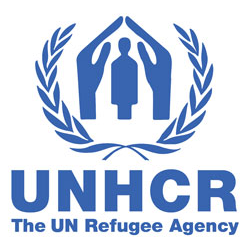Main Debates
- Where should state jurisdiction and responsibility start?
- Who has responsibility for asylum seekers rescued at sea?
Main Points
- Relocating the borders into international zones and third countries
- Offshore action of state authorities and outsourcing of state functions
- Interaction between international law of the sea and refugee and human rights law
UNHCR Documents
- UNHCR, ’Guidance Note on bilateral and/or multilateral transfer arrangements of asylum-seekers’, May 2013.
Case law
- Hirsi Jamaa and Others v Italy, European Court of Human Rights, Application no 27765/09, Judgment of 23 February 2012 (European Court of Human Rights opinion ruling that interdiction on the high seas and return to country of departure without any inquiry into threats to life and liberty violated European human rights law).
- R v. Immigration Officer at Prague Airport and Another, Ex parte European Roma Rights Centre and Others, [2004] UKHL 55, 9 December 2004 (U.K. House of Lords judicial decision that U.K. immigration officer stationed in the Prague Airport unlawfully discriminated against Czech citizens of Roma origin seeking to travel to the U.K.).
- Haitian Center for Human Rights v. United States, Case 10.675, Report No. 51/96, Inter-American Commission of Human Rights Doc. OEA/Ser.L/V/II.95 Doc. 7 rev., 13 March 1997 (Judicial decision by the Inter-American Commission of Human Rights ruling that interdiction of vessels at the high seas and repatriation of Haitian asylum-seekers breached their right to seek and receive asylum, as well as the right life).
- Chris Sale, Acting Commissioner, Immigration and Naturalization Service, et al. v. Haitian Centers Council, Inc., et al., (1993) 509 U.S. 155; 113 S. Ct. 2549, United States Supreme Court, 21 June 1993 (U.S. Supreme Court opinion ruling that interdiction on the high seas did not violate national or international law).
Readings
Core
- Fischer-Lescano, T. Löhr, and T. Tohidipur, ‘Legal Opinion - Border Controls at Sea: Requirements under International Human Rights and Refugee Law’, International Journal of Refugee Law, vol. 21(2009), pp. 256–. 296.
Extended
- S. Hamood, ‘EU–Libya Cooperation on Migration: A Raw Deal for Refugees and Migrants?’, Journal of Refugee Studies, vol. 21 (2008), pp. 19–42.
- G. Noll, ‘Article 31’, in A. Zimmerman (ed.), The 1951 Convention Relating to the Status of Refugees and Its 1967 Protocol: A Commentary (Oxford: Oxford University Press, 2011), pp. 1243–1276.
- K. Wouters and M. Den Heijer, ‘The Marine I Case: a Comment’, International Journal of Refugee Law, vol. 22 (2010), pp. 1–19.
- Guy S. Goodwin-Gill, ‘The Right to Seek Asylum: Interception at Sea and the Principle of Non-Refoulement’, International Journal of Refugee Law, 2011 (3) pp. 443-457.
- T. Gammeltoft-Hansen, Access to Asylum: International Refugee Law and the Globalisation of Migration Control (Cambridge: Cambridge University Press, 2011).
- Mariaguilia Giuffré, ‘State Responsibility Beyond Borders: What Legal Basis for Italy’s Push-backs to Libya?’ International Journal of Refugee Law, 2012 (4), pp. 692-734.
- Long, K., ‘In Search of Sanctuary: Border Closures, ‘Safe’ Zones and Refugee Protection’, Journal of Refugee Studies, 2013 (3) pp. 458-476.
 II.2.2 Access to Territory and Protection at Sea
II.2.2 Access to Territory and Protection at Sea
 II.2.2.1 Visa Requirements
II.2.2.1 Visa Requirements
 II.2.2.2 Carrier Sanctions
II.2.2.2 Carrier Sanctions
 II.2.2.3 Extraterritorial Immigration Control
II.2.2.3 Extraterritorial Immigration Control
 II.2.2.4 Interceptions and Rescue at Sea
II.2.2.4 Interceptions and Rescue at Sea
 Treaties
Treaties# Name Size 1  International Convention on Maritime Search and Rescue, 27 April 1979, 1403 U.N.T.S.
International Convention on Maritime Search and Rescue, 27 April 1979, 1403 U.N.T.S. Empty 
 UNHCR Documents
UNHCR Documents



